Artifacts Summary
- Conducted an A/B test comparing targeting strategies for Google AdWords search ads: narrow audience targeting using Primer firmographic profiles vs. untargeted.
- Untargeted ads pushed to broad audiences performed better on surface-level campaign metrics like impressions and clicks, but targeted ads had 5% conversion rates compared to just 0.2% for untargeted.
- A total of $1,100 spent on untargeted ads yielded a $0 return; the same budget for targeted ads provided a positive ROI of $4,500 - over 4.5X higher
- Takeaways: Can't trust top-funnel indicators alone. Trimming waste by focusing ads on ideal customer profiles cuts unqualified traffic but drastically lifts return on ad spend, even if some vanity metrics decrease.
The Problem
As Primer, we had seen the effectiveness of our untargeted search ads diminishing over time. As more searchers bid up the prices for keywords, we faced rising costs-per-click and decreasing returns on spend. This signaled that our broad audience targeting approach was becoming less and less efficient.
Hypothesis
We hypothesized that narrowing down targeting to only audiences matching our ideal customer profile could increase the efficiency of our search budget. Although we expected dramatic decreases in impressions and clicks, we predicted this focused approach would drive higher downstream conversion rates from better-qualified traffic. Even if typical vanity campaign metrics like cost-per-click increased, we believed concentrating spend on profitable subsets vs broad audience would eliminate unprofitable waste and yield an improved return on ad spend.
Experiment
We set up an A/B test across two ad groups. One targeted broad keywords without any audience targeting. The other targeted the same unbranded keywords but restricted targeting exclusively to Primer audiences matching our target customer profile.
We tracked performance over a two-week testing period across search, YouTube, and display. The test ultimately ended up structured with two main ad groups:
Group 1: Unbranded Keywords With No Audiences
Group 2: Unbranded Keywords With Primer Audiences
In addition to these two unbranded keyword groups, we also had ad groups running for our branded keywords that were serving broader audiences.
This test structure allowed us to analyze the direct impact of applying our Primer buyer audiences compared to a control group that represented our typical broad audience targeting approach. By running the two strategies side by side, we aimed to determine if focused ICP-based audiences could be the key to regaining efficiency despite initially reaching fewer potential searchers.
Results
The headline results revealed in our testing aligned closely with the significant discrepancies seen in conversion rates:
Untargeted ads drove over 4x more impressions and nearly 20x more clicks. However, this higher volume failed to drive any tangible pipeline or return.
Comparatively, ads restricted to our target profiles saw:
- 5% conversion rate overall, over 20x higher than the 0.2% rate from broad audience targeting
- 3 accounts matching our ideal customer profile (ICP)
- 2 form submissions and 1 marketing-qualified lead
- Most critically, $12,000 in attributable new ARR from 1 sales opportunity
So while the Primer Audiences approach suffered on vanity metrics, driving lower impression and click volumes, it excelled at generating qualified traffic that converted and drove revenue.
From nearly equal $1,100 ad spends, untargeted ads failed to deliver any return, while targeted ads secured $12,000 in the sales pipeline - making for an over 4.5X positive return on ad spend.
This disconnect between funnel metrics illustrates the need to analyze campaign success based on bottom-funnel conversion impact aligned directly to revenue goals.

Key Takeaways
The results of this test revealed actionable takeaways about our search advertising approach:
The deception of vanity metrics - Impressions, clicks, and macro conversion metrics can all be misleading if not connected to revenue outcomes. Judging campaign success on these alone fails to capture the true return on investment.
The primacy of bottom-funnel impact - Ultimately, qualified traffic driving tangible pipeline and attributable ARR should dictate campaign optimization above all else.
The power of focused targeting - Eliminating waste by aligning targeting to profiles statistically more likely to convert allows more budget to go towards profitable customers.
Opportunities to refine further - There remains room to boost volume further while maintaining conversion rates through improved interaction rates, ad copy, landing pages, and campaign fine-tuning.
We can continue optimizing search campaigns for scalable efficiency gains over time, despite initial drops in click volume. Concentrating spend on well-defined segments aligned with our revenue goals allows us to maximize ROI.
Take a leap to higher returns from your paid advertising efforts – try Primer for FREE!








